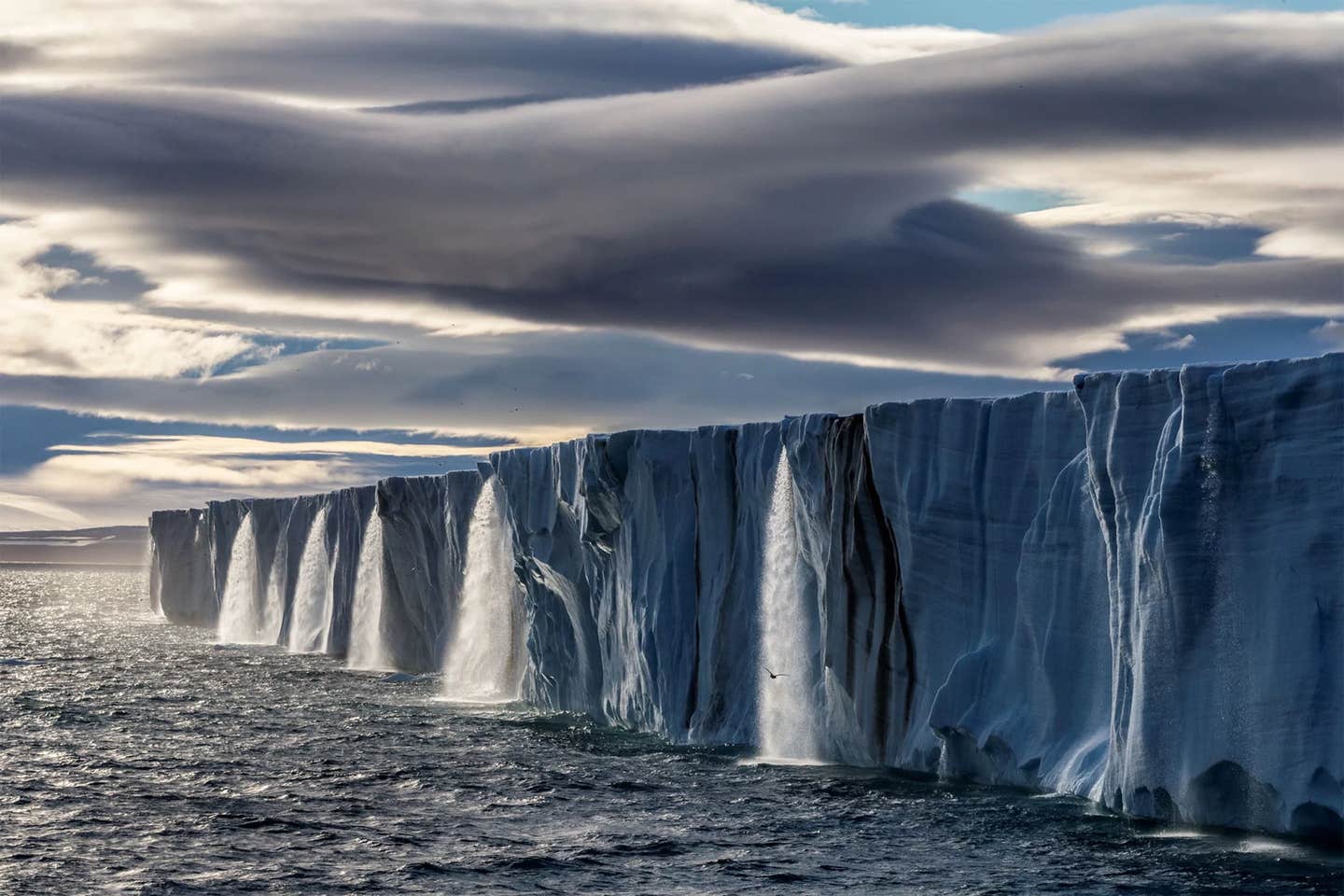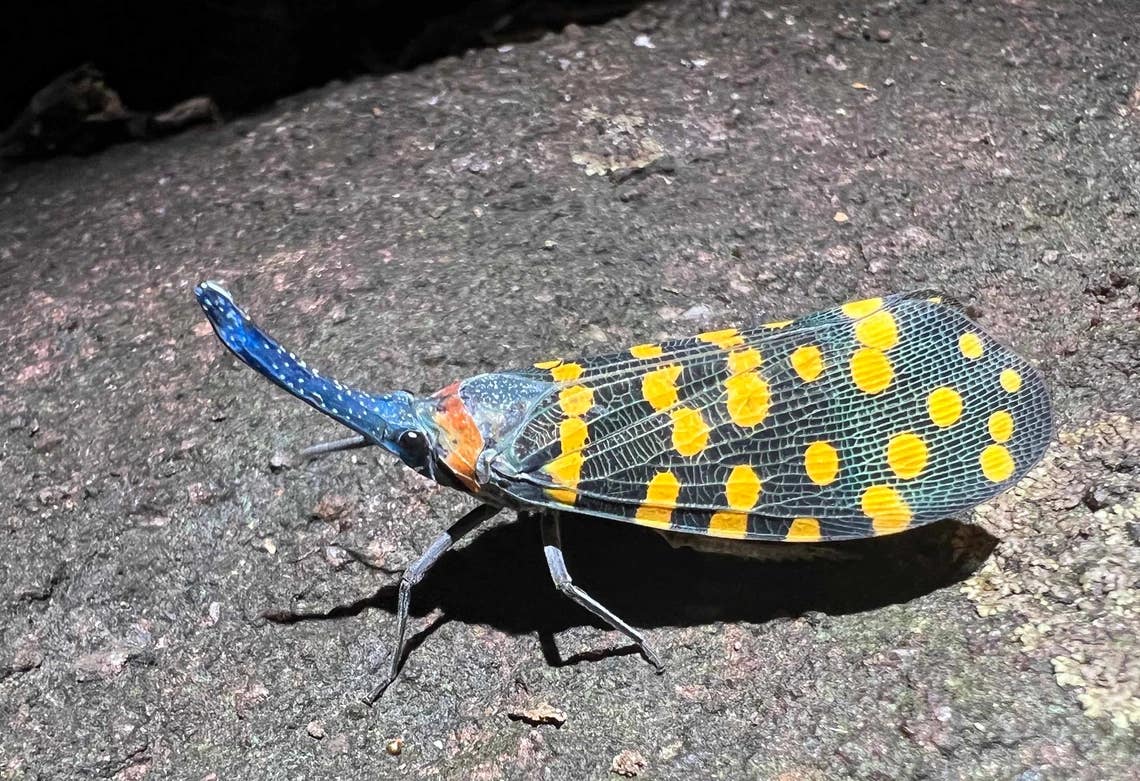Do ancient pathogens emerging from melting ice pose a risk to humanity?
Earth’s melting permafrost and glacial ice may pose a newfound threat to modern ecosystems and, potentially, to humanity itself.

[July 29, 2023: Staff Writer, The Brighter Side of News]
Earth's melting permafrost and glacial ice may pose a newfound threat to modern ecosystems and, potentially, to humanity itself. (CREDIT: Creative Commons)
As global temperatures steadily rise, hidden pathogens trapped for millennia within the icy confines of Earth's permafrost and glacial ice may pose a newfound threat to modern ecosystems and, potentially, to humanity itself.
These ancient pathogens, frozen and forgotten, have been labeled as 'time-travelling' by scientists due to their potential to disrupt the present after having been dormant for ages. The latest research predicts that climate change may facilitate their unprecedented re-emergence, causing a ripple of ecological changes that could reverberate across the globe.
In the face of such an unpredictable hazard, two leading scientists, Dr. Giovanni Strona from the European Commision Joint Research Centre and Matthew Flinders Professor of Global Ecology Corey Bradshaw from Flinders University in Australia, have embarked on an ambitious study to calculate the ecological risks posed by these ancient microbes.
Their findings, published today in the open-access journal PLOS Computational Biology, spotlight the dangers of these unexpected invaders and provide valuable insights for the scientific community and the world at large.
Related Stories
The team embarked on a virtual exploration of the perils of these prehistoric pathogens using Avida, an artificial-life software platform developed by Michigan State University. The researchers constructed simulated environments, where digital analogues of these ancient invaders infiltrated communities of bacteria-like hosts. By comparing these digital invasions to control simulations where no such invasions occurred, they were able to observe and assess the potential damage caused by these re-emerging pathogens.
Their discoveries are a stark wake-up call to the potential dangers lurking within the melting ice. The scientists found that in many instances, these ancient pathogens were not only able to survive in a contemporary environment, but also evolve and, in around 3% of cases, become dominant within their new ecological niches.
Alarmingly, approximately 1% of these invaders brought about unexpected outcomes. Some provoked mass extinctions, causing up to a third of the host species to die out, while others triggered a surge in diversity, increasing it by up to 12% in comparison to the control simulations.
Schematic representation of the simulation framework. The scheme refers to a single pair of control versus invasion simulations. The two sets of contiguous squares at the top of the panel represent different, subsequent snapshots of digital communities. (CREDIT: PLOS Computational Biology)
Such percentage values may seem minuscule, yet given the sheer number of ancient microbes potentially poised for release into modern ecosystems, the danger becomes substantial. According to the researchers, these uncontrolled outbreaks could represent a significant ecological risk.
Dr. Giovanni Strona, the lead author of the study, notes that their findings take the discussion around these ancient microbes beyond speculation for the first time. "We provide an extensive analysis of the risk posed to modern ecological communities by these ‘time-travelling’ pathogens through advanced computer simulations," says Strona. "Invading pathogens could often survive, evolve and, in a few cases, become exceptionally persistent and dominant in the community, causing either substantial losses or changes in the number of living species."
Persistence of time-travelling invaders in recipient communities. Invader persistence compared to that of native pathogens, expressed as the distribution of the fraction of native pathogens less-persistent than the target invader across all simulations. (CREDIT: PLOS Computational Biology)
This research presents a chilling scenario of unforeseen threats typically confined to the realm of science fiction, yet now posed as a potential reality. Such threats could manifest as powerful drivers of ecological damage and disruption.
According to Professor Corey Bradshaw, the study’s findings indicate a non-negligible risk of invasion by unknown 'black swan' pathogens that could cause irreversible damage. “Our results are worrisome," Bradshaw admits. "They point to an actual risk deriving from the rare events where pathogens currently trapped in the permafrost and ice produce severe ecological impacts." He mentions a chilling scenario where a single ancient pathogen reduced the size of its host community by 30% compared to the non-invasive control simulations.
Prevalence of extant invaders in the invaded communities across all simulations. Prevalence is the percentage of invader species (invader and all its lineages) in the recipient pathogen community compared to all pathogen species. Solid lines are the mean values of the simulations, while shaded areas are 99% confidence intervals. (CREDIT: PLOS Computational Biology)
The researchers assert that society needs to appreciate and acknowledge the potential risk posed by these ancient microbes. "The results tell us that the risk is no longer simply a fantasy that we shouldn’t be prepared to defend against," says Bradshaw, underscoring the urgency of preparedness for any unintended consequences of their release into the modern world.
This study shines a spotlight on the unexpected side effects of global warming, revealing that the ripple effects of climate change go far beyond the widely discussed sea-level rise, extreme weather events, and biodiversity loss. The resurrection of ancient pathogens from their icy tombs may pose an additional, unpredictable threat to global ecosystems and human health. As our world continues to warm, the potential 'time-travelling' invaders from the past underscore the urgent need for multidimensional climate change mitigation and adaptation strategies.
For more environmental good news stories check out our Green Impact section at The Brighter Side of News.
Note: Materials provided above by The Brighter Side of News. Content may be edited for style and length.
Like these kind of feel good stories? Get the Brighter Side of News' newsletter.



